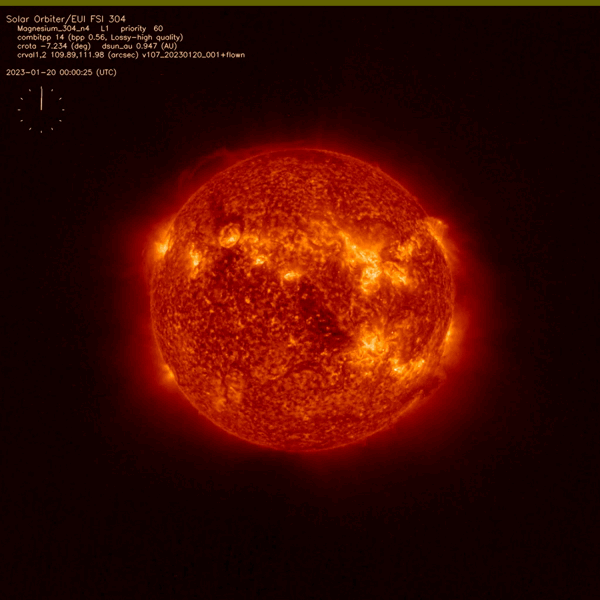Last week, solar observers simply had not enough eyes to watch all the sunspots, solar flares and associated coronal mass ejections that were visible. On top of that, also filaments and prominences joined the party. Solar filaments are clouds of charged particles ("plasma") above the solar surface squeezed between magnetic regions of opposite polarity. Being cooler and denser than the plasma underneath and their surroundings, they appear as dark lines when seen on the solar disk and as bright blobs when seen near the solar limb (then they are called "prominences"). Special filters are required to observe these features, and one such a filter is the Hydrogen-alpha (H-alpha) line in the red part of the solar spectrum.
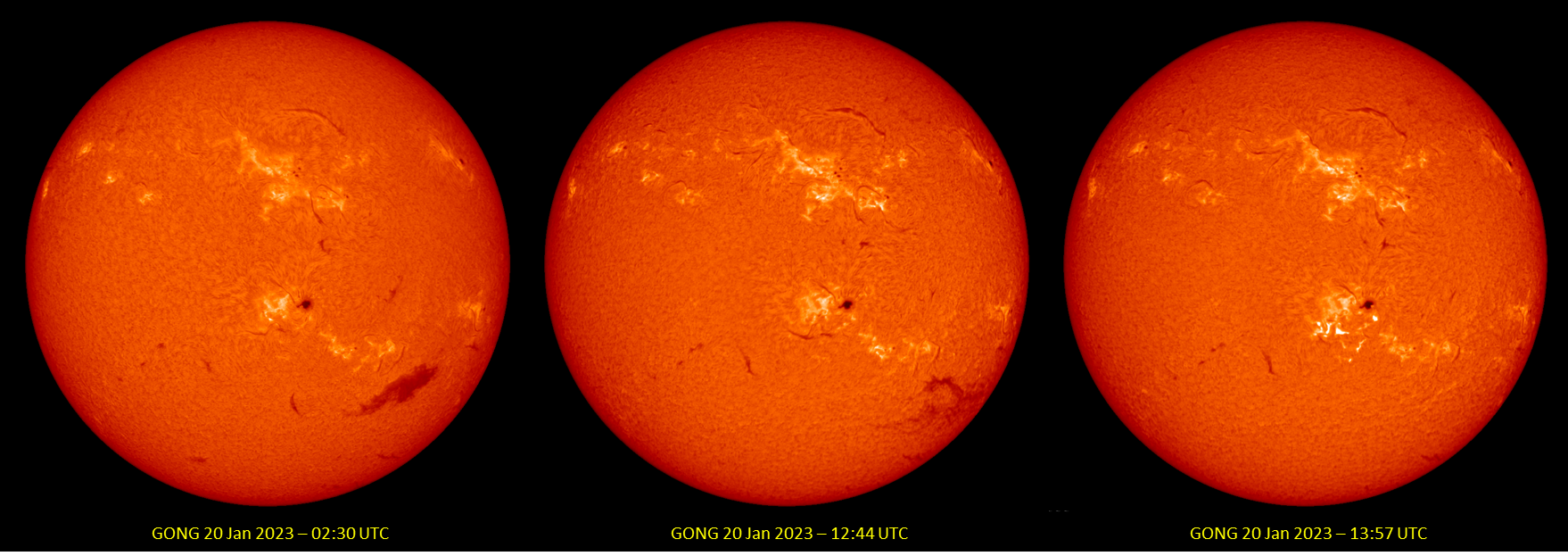
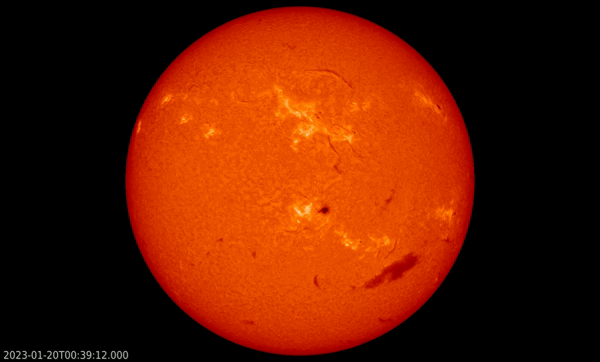
The above images show the Sun in H-alpha and were taken by the ground-based observatories of the GONG H-alpha network (Global Oscillation Network group). The stills show the filament in the southwest quadrant ("lower right") early on 20 January, again shortly after noon during its eruption, and finally around 14:00 UTC when it had already been fully ejected. The filament had a length of about 30 degrees on the solar disk corresponding to around 340.000 km, a bit smaller than the average Earth-Moon distance.

The eruption was not associated with an obvious flare in soft x-ray. GOES did observe 2 flares around the time of the filament eruption: a C4 flare peaking at 12:57 UTC, and a C5 flare peaking at 14:07 UTC. However, both flares were related to eruptive activity in NOAA 3190, the largest sunspot group visible on the Sun. As it happens, the C5 flare was associated with a filament eruption to the southeast of NOAA 3190's main spot (image). That eruption was accompanied by a strong coronal dimming, as is evident in the SDO/AIA 193 base difference clip (above right) in which the first image (10:36 UTC) is subtracted in the sequence from the current image (SWHV). Coronal dimming is usually associated with the occurrence of a coronal mass ejection (CME), as was also confirmed by the radio telescopes in Humain that showed a Type II radio burst at that time. This is illustrated by the annotated radio-spectrogram underneath, with on its horizontal axis the time, and the vertical axis representing decreasing frequency. The boxes correspond loosely to the effects visible in the EUV images. The features in the right box (dashed) are not solar radio emissions, but result from interferences as the Sun sets. The GOES x-ray flux is shown on top.
The AIA 193 images shows that the eruption of the large filament was associated with some scattered coronal dimming, but the radiospectrogram indicates there were no particular radio emissions recorded during the timeframe of the filament eruption, i.e. between approximately 12:00 and 14:00 UTC. This is not an uncommon situation (see e.g. Gopalswamy 2008), and may simply indicate that the magnetic field strength and density of the ambient medium did not allow for a shock to form.
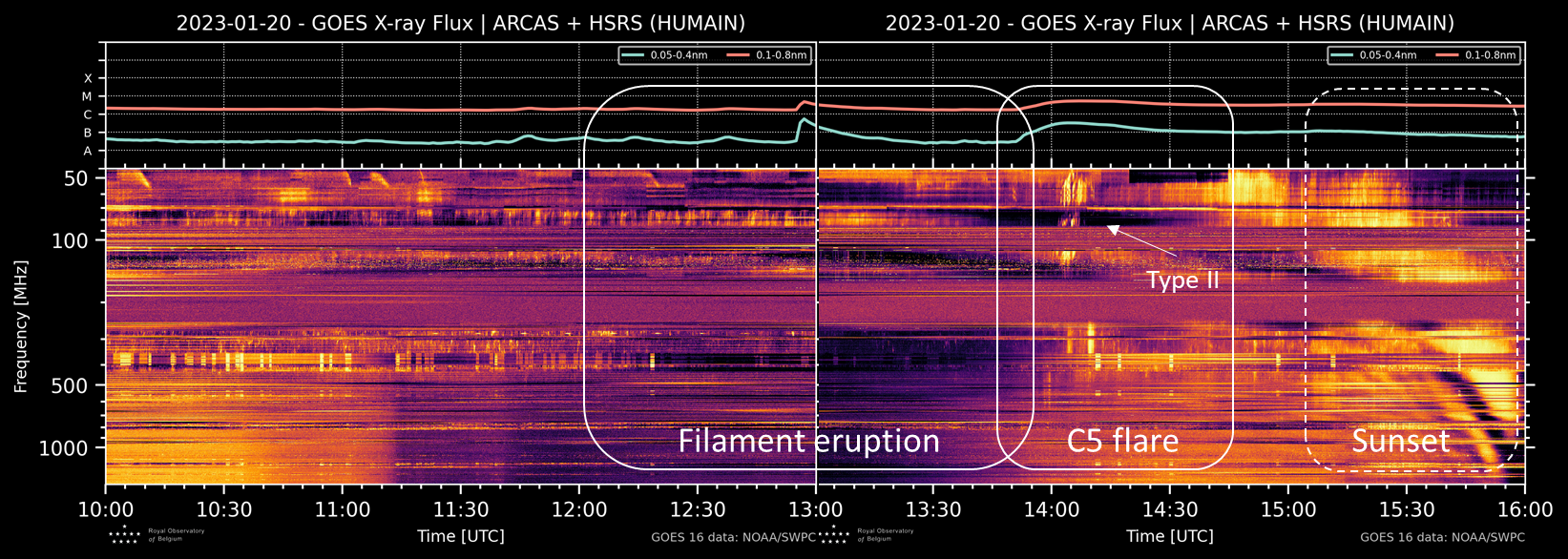
A CME was first observed in coronagraphic imagery by the SOHO/LASCO C2 instrument at 13:36 UTC. It had a plane-of-the-sky speed of 512 km/s and a width of 96 degrees (CACTus), and was directed towards the southwest. It was followed by a fainter and slower CME directed mostly towards the south, and which was associated with the C5 flare. The clip below shows GOES/SUVI (30.4 nm) and PROBA2/SWAP (17.4 nm) EUV imagery overlaid on LASCO/C2 coronagraphic imagery, running from 10:30 UTC till 17:00 UTC. A weak disturbance in the solar wind parameters (DSCOVR) was recorded from around 03:00UTC onwards on 23 January, which may be related to these CMEs delivering a glancing blow to the earth environment. Nonetheless, the jury is still out on this one, as it may as well be due to an earlier CME, or simply a transient in the solar wind.
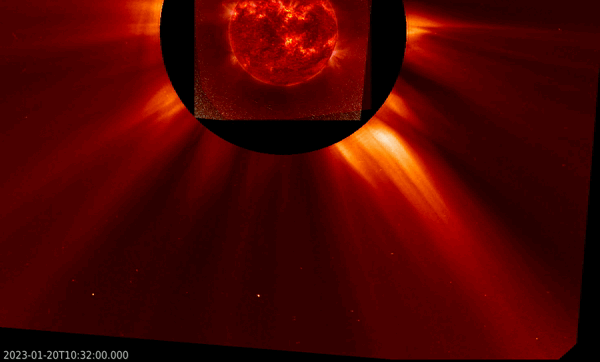
Finally, there was also extreme ultraviolet imagery (30.4 nm) of the filament eruption obtained by the Full Sun Imager (FSI) of Solar Orbiter's EUI instrument. On 20 January, SolO was at about the same distance from the Sun as the Earth (141.5 vs 147.2 million kilometer), trailing our planet by about 27 degrees. It thus provided a more oblique view of this specific filament eruption.
